MaryAnn Bernal's Blog, page 277
May 26, 2014
Long-Lost Mummy of Pharaoh's Foster Brother Found
by Rossella Lorenzi
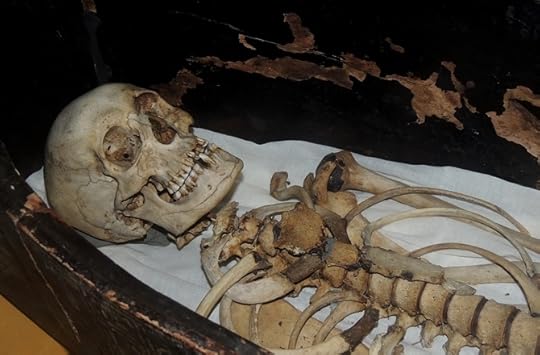 The mummy of the pharaoh Amenhotep II's foster brother may have been found in a former monastery, according to archival research into 19th-century documents.
The mummy of the pharaoh Amenhotep II's foster brother may have been found in a former monastery, according to archival research into 19th-century documents.
The mummy, now reduced to a skeleton, is believed to be that of Qenamun, the chief steward of Amenhotep II (about 1427–1400 B.C.) who was the 7th Pharaoh of Egypt's 18th Dynasty and likely Tutankhamun's great-great-grandfather.
Qenamun was effectively Amenhotep II's foster brother, as his mother, Amenemipet, was the chief royal nurse of the future king. The two grew up together and the bond endured in adult life, with Qenamun enjoying a high and powerful status. But the whereabouts of Qenamun's afterlife journey had remained a mystery -- no coffin nor mummy was found in his large and beautifully decorated tomb in Thebes."Identifying Qenamun has been like fitting together long-lost puzzle pieces," Marilina Betrò, professor of Egyptology at Pisa University, told Discovery News.It all began two years ago when a skeleton resting in a cardboard box was found in a store room of a 14th-century monastery. Located in Calci, a village near Pisa, the monastery now houses one of the world's oldest natural history museums."Intriguingly, the skull bore an inscription in black ink stating it was one of the mummies brought from Egypt by Ippolito Rosellini, Europe's first Egyptology professor," Marilina Betrò told Discovery News. She holds the same chair at Pisa University that Rosellini did.In 1828 the Pisa academic left for Egypt with Jean-Francois Champollion, the French philologist who had recently deciphered the Rosetta Stone.Financed by the grand-duke of Tuscany, Leopold II, and the King of France, Charles X, the joint Franco-Tuscan expedition brought to Europe a treasure trove of ancient antiquities. At the same time, it yielded a survey of the monuments of Egypt and their hieroglyphic inscriptions, which, thanks to Champollion, were readable for the first time.On Dec. 29, 1829, back from Egypt, Rosellini wrote a report to Grand Duke Leopold II. Attached to that letter was a list of 1878 antiquities he had packed for the journey back to Tuscany -- 660 were acquired by excavations, while 1,218 were purchased.Rosellini stated he chose to take the best intact items, leaving behind several other objects because of shipping costs."Until a few years ago, only the draft of that letter was known, and it lacked the list. We found it in the National Archives in Prague, where all the documents of the Habsburg-Lorraine family are kept," Betrò said.The list of the 660 antiquities began with the description of 11 mummies. Seven are currently on display in Florence's Egypt museum, while records about three others -- a woman, a man and a child -- reveal they were destroyed and never made to the Florence museum. The eleventh mummy remained a mystery.
http://news.discovery.com/history/ancient-egypt/long-lost-mummy-of-pharaohs-foster-brother-found-140523.htm

 The mummy of the pharaoh Amenhotep II's foster brother may have been found in a former monastery, according to archival research into 19th-century documents.
The mummy of the pharaoh Amenhotep II's foster brother may have been found in a former monastery, according to archival research into 19th-century documents.The mummy, now reduced to a skeleton, is believed to be that of Qenamun, the chief steward of Amenhotep II (about 1427–1400 B.C.) who was the 7th Pharaoh of Egypt's 18th Dynasty and likely Tutankhamun's great-great-grandfather.
Qenamun was effectively Amenhotep II's foster brother, as his mother, Amenemipet, was the chief royal nurse of the future king. The two grew up together and the bond endured in adult life, with Qenamun enjoying a high and powerful status. But the whereabouts of Qenamun's afterlife journey had remained a mystery -- no coffin nor mummy was found in his large and beautifully decorated tomb in Thebes."Identifying Qenamun has been like fitting together long-lost puzzle pieces," Marilina Betrò, professor of Egyptology at Pisa University, told Discovery News.It all began two years ago when a skeleton resting in a cardboard box was found in a store room of a 14th-century monastery. Located in Calci, a village near Pisa, the monastery now houses one of the world's oldest natural history museums."Intriguingly, the skull bore an inscription in black ink stating it was one of the mummies brought from Egypt by Ippolito Rosellini, Europe's first Egyptology professor," Marilina Betrò told Discovery News. She holds the same chair at Pisa University that Rosellini did.In 1828 the Pisa academic left for Egypt with Jean-Francois Champollion, the French philologist who had recently deciphered the Rosetta Stone.Financed by the grand-duke of Tuscany, Leopold II, and the King of France, Charles X, the joint Franco-Tuscan expedition brought to Europe a treasure trove of ancient antiquities. At the same time, it yielded a survey of the monuments of Egypt and their hieroglyphic inscriptions, which, thanks to Champollion, were readable for the first time.On Dec. 29, 1829, back from Egypt, Rosellini wrote a report to Grand Duke Leopold II. Attached to that letter was a list of 1878 antiquities he had packed for the journey back to Tuscany -- 660 were acquired by excavations, while 1,218 were purchased.Rosellini stated he chose to take the best intact items, leaving behind several other objects because of shipping costs."Until a few years ago, only the draft of that letter was known, and it lacked the list. We found it in the National Archives in Prague, where all the documents of the Habsburg-Lorraine family are kept," Betrò said.The list of the 660 antiquities began with the description of 11 mummies. Seven are currently on display in Florence's Egypt museum, while records about three others -- a woman, a man and a child -- reveal they were destroyed and never made to the Florence museum. The eleventh mummy remained a mystery.
http://news.discovery.com/history/ancient-egypt/long-lost-mummy-of-pharaohs-foster-brother-found-140523.htm

Published on May 26, 2014 14:07
Congratulations Brenda Perlin, John Emil Augustine and Christoph Fischer - top 50 Self-Published Books
 http://www.indieauthorland.com/the-50-self-published-books-worth-reading-2013-14/
http://www.indieauthorland.com/the-50-self-published-books-worth-reading-2013-14/
43Shattered RealityBrenda PerlinWhen Brooklyn meets Bo, their lives are instantly turned upside down.
Brooklyn and Bo, each unhappily married to someone else, have to decide whether to stay with their spouses or give up everything for each other. Find out what Brooklyn’s husband and Bo’s soon-to-be ex-wife do to break them up.
What you said:
Ms. Perlin’s character, Brooklyn, takes us on a journey of the heart. - Tamy Burns

28From the AbyssJohn Emil AugustineJohn Augustine is looking for a lasting, loving relationship and finds one hidden where he least expects it. But soon, John begins to realize his wife is far different than the woman he thought he married. Her mental illness soon drags the new family past the point of no return.
What you said:
About the side of escaping a violent and abusive relationship from the side you never hear about, the abused husband. - Nick Kmita

21The Luck of the WeissensteinersChristopher FischerThe Luck of the Weissensteiners is an epic saga set in wartime Eastern Europe. It follows the lives of two families – one Jewish, one Catholic – and their entwined survival amidst the backdrop of the second world war; first the fascist then the communist invasion and occupation of Slovakia, and the horror of the consequences of war.
What you said:
Very authentic historical fiction with a fascinating backdrop of WWII from the vantage of a Jewish exile – @AlcoholAuthor

Published on May 26, 2014 09:16
Viking Week at Story Finds - The Briton and the Dane, the Complete Trilogy featured
The Briton and the DaneThe Complete Trilogy 2nd EditionMary Ann Bernal
 http://storyfinds.com/book/8832/the-briton-and-the-dane
http://storyfinds.com/book/8832/the-briton-and-the-daneThe Briton and the Dane novels bring to life the tumultuous ninth century when the formidable Vikings terrorized the civilized world. The epic adventure runs the gamut of deception, treachery, intrigue and betrayal during a time of war and conquest in Anglo-Saxon Britain.

Published on May 26, 2014 05:42
History Trivia - Germanicus returns to Rome as a conquering hero
May 26
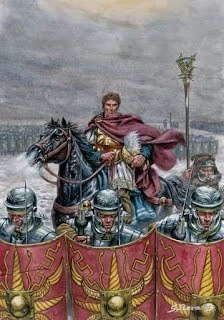
17 Germanicus returned to Rome as a conquering hero; he celebrated a triumph for his victories over the Cherusci, Chatti and other German tribes west of the Elbe.
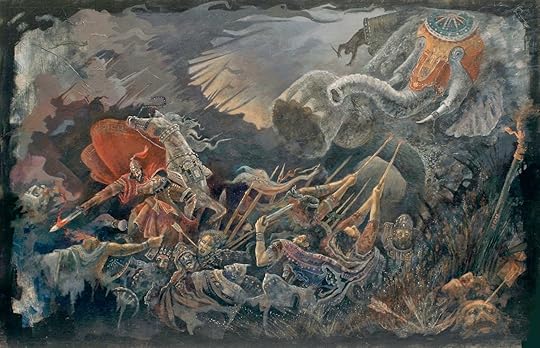
451 Battle of Avarayr between Armenian rebels and the Sassanid Empire took place. The Empire defeated the Armenians militarily but guaranteed them freedom to openly practice Christianity.
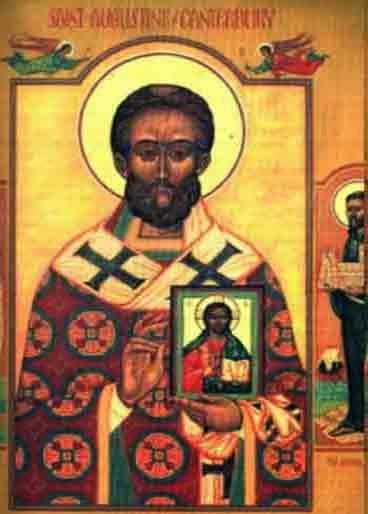
604 St Augustine died. The Benedictine monk became the first Archbishop of Canterbury in the year 597. He is considered the "Apostle to the English" and a founder of the English Church.
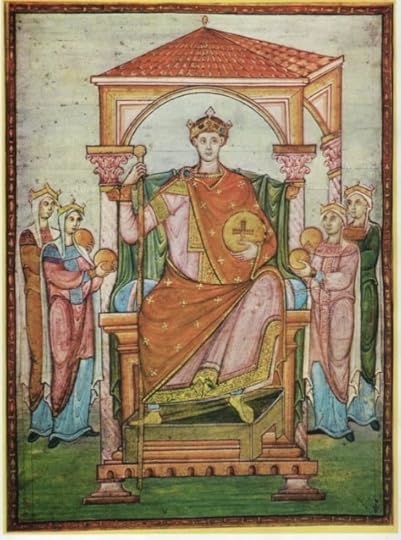
961 German King Otto II was crowned.


17 Germanicus returned to Rome as a conquering hero; he celebrated a triumph for his victories over the Cherusci, Chatti and other German tribes west of the Elbe.

451 Battle of Avarayr between Armenian rebels and the Sassanid Empire took place. The Empire defeated the Armenians militarily but guaranteed them freedom to openly practice Christianity.

604 St Augustine died. The Benedictine monk became the first Archbishop of Canterbury in the year 597. He is considered the "Apostle to the English" and a founder of the English Church.

961 German King Otto II was crowned.

Published on May 26, 2014 05:39
Memorial Day Tribute
Published on May 26, 2014 05:39
May 25, 2014
Congratulations author K. Meador - Authorsdb #1

 Featured Hot
Featured Hot  Author DetailsPen NamekmeadorWebsitehttp://www.authorkmeador.comBloghttp://inthemidst-km.blogspot.com/Twitter@authorkmeadorMy Facebook Friend MeFacebook PageLike My PageGoodReadsBecome a FanLinkedInConnect With MeGoogle+Add Me To Your CircleMy PinterestRepin & Follow MeAuthorGraphGet My AutographBioBorn in Jacksonville, Florida and raised in Texas since she was four years old, K-Trina Meador is the youngest of five children. Growing up in Cross Plains, Texas and being raised on a seventy acre farm gives her an appreciation for country life and the small town community. She has two grown sons.
Author DetailsPen NamekmeadorWebsitehttp://www.authorkmeador.comBloghttp://inthemidst-km.blogspot.com/Twitter@authorkmeadorMy Facebook Friend MeFacebook PageLike My PageGoodReadsBecome a FanLinkedInConnect With MeGoogle+Add Me To Your CircleMy PinterestRepin & Follow MeAuthorGraphGet My AutographBioBorn in Jacksonville, Florida and raised in Texas since she was four years old, K-Trina Meador is the youngest of five children. Growing up in Cross Plains, Texas and being raised on a seventy acre farm gives her an appreciation for country life and the small town community. She has two grown sons.She enjoys hiking, snorkeling, scuba diving, photography and aviation. She is currently traveling from state to state working as an aircraft mechanic and author. Current locations include: Hawaii, Georgia, South Carolina and currently, Oklahoma.
Her first novel, Journey to Freedom, was published in April 2012. Followed by Their Journey Begins in November 2012 and Transcendence in December 2012. Most recent publication is The Knight of the Dixie Wilds in May 2013.Where I LiveYukon, Oklahoma http://authorsdb.com/authors-directory/4488-k-meador

Published on May 25, 2014 14:25
Viking Week Poll - Book Cover Contest - The Briton and the Dane The Complete Trilogy featured cover

Check out the titles and please vote.
http://storyfinds.com/cover-poll/8863/fall-in-love-with-Vikings
Cover design by Steven Novak, novakillustration.com

Published on May 25, 2014 08:02
I write like Dan Brown - who do you write like?

I write like
Dan BrownI Write Like. Analyze your writing!
Check which famous writer you write like with this statistical analysis tool, which analyzes your word choice and writing style and compares them with those of the famous writers.
http://iwl.me/

Published on May 25, 2014 06:00
History Trivia - Thales of Greece makes the first known prediction of a solar eclipse
May 25

585 BC Thales of Greece made the first known prediction of a solar eclipse.
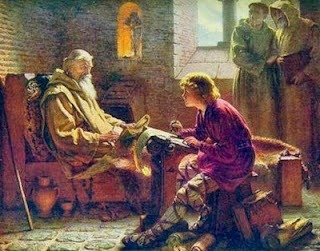
735 The Venerable Bede died.
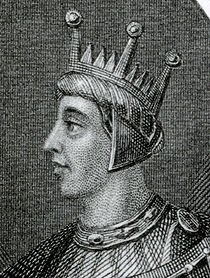
946 Edmund the Older, king of Wessex/England (939-46), died.
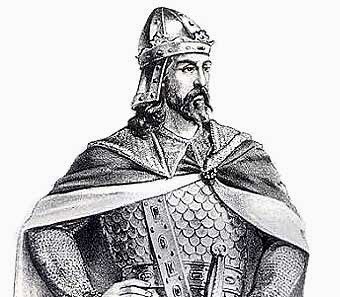
1085 Alfonso VI of Castile took Toledo, Spain back from the Moors.
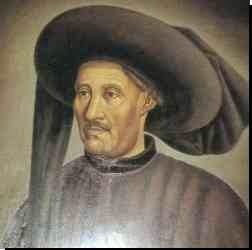
1420 Henry the Navigator was appointed governor of the Order of Christ.
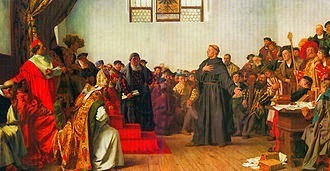
1521 The Diet of Worms ended when Charles V, Holy Roman Emperor, issued the Edict of Worms, which declared Protestant Reformation leader Martin Luther an outlaw.

1659 Oliver Cromwell's son Richard resigned as Lord Protector of England.


585 BC Thales of Greece made the first known prediction of a solar eclipse.

735 The Venerable Bede died.

946 Edmund the Older, king of Wessex/England (939-46), died.

1085 Alfonso VI of Castile took Toledo, Spain back from the Moors.

1420 Henry the Navigator was appointed governor of the Order of Christ.

1521 The Diet of Worms ended when Charles V, Holy Roman Emperor, issued the Edict of Worms, which declared Protestant Reformation leader Martin Luther an outlaw.

1659 Oliver Cromwell's son Richard resigned as Lord Protector of England.

Published on May 25, 2014 05:59
May 24, 2014
Memorial Day: 7 Historical Facts About the Holiday
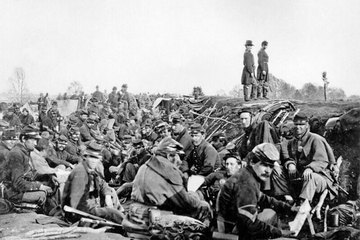
 Confederate soldiers during the Civil War
Confederate soldiers during the Civil WarCredit: National Archives
While many look forward to Memorial Day as a chance to barbecue, spend time with family and hop in the car for a long weekend getaway, the holiday's origin is anchored in much more somber circumstances. From its roots as a Civil War commemoration to the Confederate version of the holiday still celebrated in the South, here are seven interesting facts about Memorial Day's history
1. Decoration Day
Though Memorial Day is a staple of the holiday calendar now, it wasn't always called that. During the Civil War, people decorated the graves of fallen soldiers on what became known at the time as "Decoration Day." Still, nobody knows for sure when and where the first Decoration Day actually occurred, with several cities angling for the title. A ceremony at the cemetery at Gettysburg honored the dead in 1863, while women in Boalsburg, Pennsylvania, placed flowers on the graves of fallen soldiers on Independence Day in 1864. Confederate women in South Carolina were honoring their dead with grave flowers as early as 1861. Other places that claim to have hosted the first Decoration Day are Savanna, Georgia, and Warrenton, Virginia
2. National observance
A century after the first Decoration Day celebration, President Lyndon B. Johnson settled the debate — in the official record at least — when he signed a proclamation decreeing that the holiday got its start 100 years earlier in Waterloo, New York. In Johnson's rendering, a Waterloo resident named Henry Welles decided to memorialize local fallen soldiers by decorating their graves at three different cemeteries in the area. A local war hero described the commemoration to Gen. John Alexander Logan, who made it a national day of remembrance first observed on May 30, 1868.
3. First speech
The first Memorial Day speech was given by James A. Garfield, then an Ohio congressman, at Arlington National Cemetery in Virginia in 1868. (The day was still known as Decoration Day.) Garfield, a former Union general, would go on to become the 20th president of the United States, though he would die from an assassin's bullet just 200 days into his first term. [8 Most Famous Assassinations in History]
4. Separate holidays
The Union lost about 360,000 soldiers during the war, compared to the 260,000 who died in the South. For decades, the South shunned the Union's Memorial Day celebrations, instead observing its own separate holiday to honor Confederate war dead till after World War I, when Memorial Day was expanded to remember the dead from all United States conflicts. Several southern states still celebrate Confederate Memorial Day, although the holiday occurs on April 26, May 10, May 30 or June 2, depending on the state. The holiday is not without controversy, however, with some arguing that it glorifies a part of American history dedicated to preserving slavery.
5. Unofficial holiday
The holiday's Decoration Day moniker lingered until 1882, but the day wasn't an official holiday until 1967. The holiday was held on May 30 until 1971, when Congress fixed the date as the last Monday in May. The holiday was officially renamed Memorial Day in 1967, when President Johnson signed legislation to that effect.
6. Many casualties
More than 150 years later, the Civil War remains the United States' deadliest conflict. More than 620,000 people died during the war. Most of the casualties occurred as a result of disease, rather than as a direct result of injuries. The second deadliest conflict was World War II, in which more than 400,000 American soldiers lost their lives.
7. Weekend plans
Memorial Day weekend getaways have become an American tradition in their own right. According to the American Automobile Association, more than 36 million people will hit the roads this holiday weekend and drive more than 50 miles (80 kilometers) to another destination. Grilling may not have been part of the original Memorial Day celebrations, but it's now a fixture of the holiday. Memorial Day is now the second-most popular holiday (after the Fourth of July) for a sun-baked barbecue: 53 percent of people grill on the holiday, according to the Hearth, Patio & Barbecue Association.
http://www.livescience.com/45862-memorial-day-facts.html

Published on May 24, 2014 13:14




